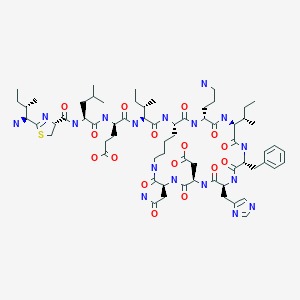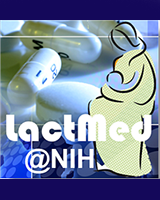Attribution Statement: LactMed is a registered trademark of the U.S. Department of Health and Human Services.
NCBI Bookshelf. A service of the National Library of Medicine, National Institutes of Health.
Drugs and Lactation Database (LactMed®) [Internet]. Bethesda (MD): National Institute of Child Health and Human Development; 2006-.
CASRN: 1405-87-4

Drug Levels and Effects
Summary of Use during Lactation
Because it is poorly absorbed after topical application and oral ingestion, bacitracin is considered a low risk to the nursing infant.[1] Only water-miscible cream or gel products should be applied to the breast because ointments may expose the infant to high levels of mineral paraffins via licking.[2] Therefore, an alternate cream product is preferred for application to the breast.
Drug Levels
Maternal Levels. Relevant published information was not found as of the revision date.
Infant Levels. Relevant published information was not found as of the revision date.
Effects in Breastfed Infants
Relevant published information was not found as of the revision date.
Effects on Lactation and Breastmilk
Relevant published information was not found as of the revision date.
Alternate Drugs to Consider
References
- 1.
- Leachman SA, Reed BR. The use of dermatologic drugs in pregnancy and lactation. Dermatol Clin. 2006;24:167-97. [PubMed: 16677965]
- 2.
- Noti A, Grob K, Biedermann M et al. Exposure of babies to C(15)-C(45) mineral paraffins from human milk and breast salves. Regul Toxicol Pharmacol. 2003;38:317-25. [PubMed: 14623482]
Substance Identification
Substance Name
Bacitracin
CAS Registry Number
1405-87-4
Drug Class
- Breast Feeding
- Anti-Infective Agents, Local
- Antibacterial Agents
Disclaimer: Information presented in this database is not meant as a substitute for professional judgment. You should consult your healthcare provider for breastfeeding advice related to your particular situation. The U.S. government does not warrant or assume any liability or responsibility for the accuracy or completeness of the information on this Site.
- User and Medical Advice Disclaimer
- Drugs and Lactation Database (LactMed) - Record Format
- LactMed - Database Creation and Peer Review Process
- Fact Sheet. Drugs and Lactation Database (LactMed)
- Drugs and Lactation Database (LactMed) - Glossary
- LactMed Selected References
- Drugs and Lactation Database (LactMed) - About Dietary Supplements
- Breastfeeding Links
- PubChem SubstanceRelated PubChem Substances
- PubMedLinks to PubMed
- Review Polymyxin B.[Drugs and Lactation Database (...]Review Polymyxin B.. Drugs and Lactation Database (LactMed®). 2006
- Review Nystatin.[Drugs and Lactation Database (...]Review Nystatin.. Drugs and Lactation Database (LactMed®). 2006
- Review Acitretin.[Drugs and Lactation Database (...]Review Acitretin.. Drugs and Lactation Database (LactMed®). 2006
- Review Neomycin.[Drugs and Lactation Database (...]Review Neomycin.. Drugs and Lactation Database (LactMed®). 2006
- Review Prilocaine.[Drugs and Lactation Database (...]Review Prilocaine.. Drugs and Lactation Database (LactMed®). 2006
- Bacitracin - Drugs and Lactation Database (LactMed®)Bacitracin - Drugs and Lactation Database (LactMed®)
Your browsing activity is empty.
Activity recording is turned off.
See more...
